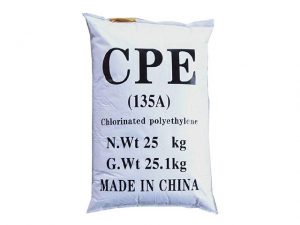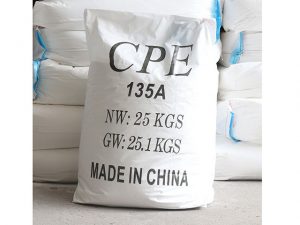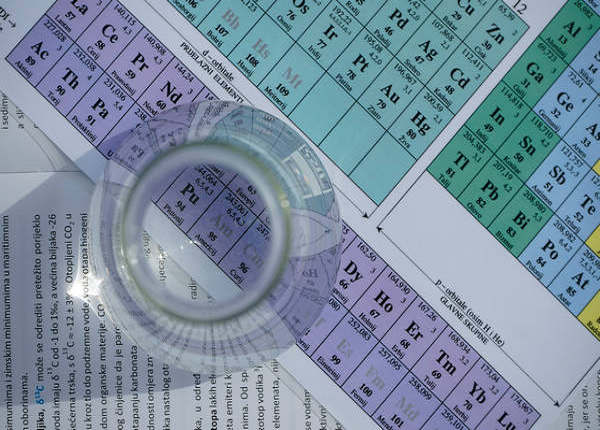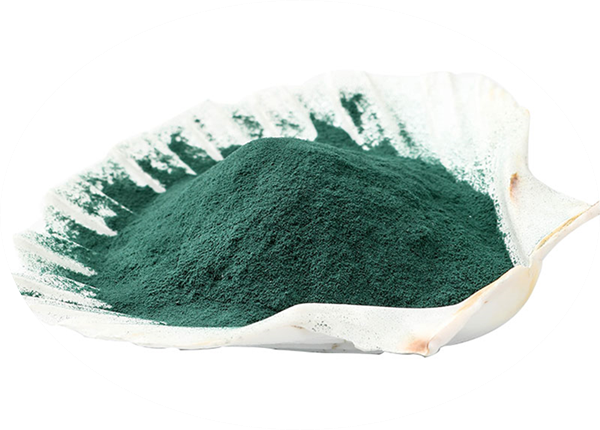MATERIAL SAFETY DATA SHEET
Section 1: Identification of the substance/mixture and of the company/undertaking


1.1 Product identifier
Product name:Chlorinated Polyethylene
Trade name:CHLORINATED POLYETHYLENE CPE135A
Chemical attribute:Long molecular chain belt organic chemicals.
REACH Reg. No.:No registration number is given yet, since this substance is a polymer and exempted from registration according to article 2.9 in REACH Regulation.
1.2 Relevant identified uses of the substance or mixture and uses advised against
Identified uses:Used in the plastics industry as an additive to modify a range of properties. Also used in rubber industry.
ses advised against:Not available.
1.3 Details of the supplier of the SDS
Manufacturer:HAIKOU BAYEE EXIM CO.,LTD
Address:5TH FLOOR,BLDG A,HAIKOU NATIONAL HI-TECH ZONE,HAIKOU,HAINAN
E-mail:chemicalexporter@foxmail.com
Telephone:+86-18789096125
Fax:+86-18789096125
1.4 Emergency telephone number
in China: +86-18789096125(only office hours available.)
Section 2: Hazards identification
2.1 Classification of the substance or mixture
Classification according to Regulation (EC) No 1272/2008[CLP]
This product does not meet the criteria for classification in any hazard class according to Regulation (EC) No 1272/2008 on classification, labelling and packaging of substances and mixtures
Classification according to Directive 1999/45/EC
This product does not meet the criteria for classification in any hazard class according to Directive 1999/45/EC on classification, labelling and packaging of substances.
本産品在1999/45/EC中(zhōng)沒有任何危險識别的分(fēn)類,包括标簽和包裝。
2.2 Label elements
Labelling according to Regulation (EC) No 1272/2008 [CLP]
No labelling information about hazard pictogram, signal word, hazard statements and precautionary statements available. This product does not meet the criteria for classification in any hazard class according to Regulation (EC) No 1272/2008 on classification, labelling and packaging of substances and mixtures.
Labelling according to Directive 1999/45/EC
No labelling information about symbol, risk phrases and safety phrases available. This product does not meet the criteria for classification in any hazard class according to Directive 1999/45/EC
2.3 Other hazards
No information available.
Section 3: Composition/information on ingredients
3.1 Substance information
| Substance name
|
CAS No.
|
EC No.
|
Classification according to 67/548/EEC | Concentration
|
| Chlorinated polyethylene | 64754-90-1 | Not available
|
Not classified.
|
≥ 95.0 % |
| Calcium distearate | 1592-23-0 | 216-472-8 | Not classified.
|
≤ 2.5 % |
| Talc (Mg3H2(SiO3)4) | 14807-96-6 | 238-877-9 | Not classified
|
≤ 2.5 % |
| Substance name
|
CAS No.
|
EC No.
|
Classification according to Regulation (EC) No 1272/2008
No 1272/2008
|
Concentration
|
| Chlorinated polyethylene
|
64754-90-1 | Not available
|
Not classified.
|
≥95.0% |
| Calcium distearate
|
1592-23-0 | 216-472-8 | Not classified.
|
≤ 2.5 % |
| Talc (Mg3H2(SiO3)4)
|
14807-96-6 | 238-877-9 | Not classified
|
≤ 2.5 % |
Section 4: First aid measures
4.1 Desc ription of first aid measures
General notes:In all cases of doubt, or when symptoms persist, seek medical attention.
Following inhalation:
Remove from exposure and move to fresh air immediately. If not breathing, give artificial respiration. If breathing is difficult, give oxygen. If effects occur, consult a physician.
Following skin contact:
Wash skin with plenty of water. Seek first aid or medical attention as needed. If molten material comes in contact with the skin, do not apply ice but cool under ice water or running stream of water. DO NOT attempt to remove the material from skin. Removal could result in severe tissue damage. Seek medical attention immediately.
Following eye contact:
Flush eyes thoroughly with water for several minutes. Remove contact lenses after the initial 1-2 minutes and continue flushing for several additional minutes. If effects occur, consult a physician, preferably an ophthalmologist. May cause injury due to mechanical action.
Following ingestion:
If swallowed, seek medical attention. May cause gastrointestinal blockage. Do not give laxatives. Do not induce vomiting unless directed to do so by medical personnel.
Notes for the doctor:
If hydrogen chloride is liberated due to thermal degradation, treat as hydrogen chloride exposure. If burn is present, treat as any thermal burn, after decontamination. No specific antidote. Treatment of exposure should be directed at the control of symptoms and the clinical condition of the patient.
4.2 Most important symptoms and effects, both acute and delayed
Potential Health Effects:
Eye Contact:
Solid or dust may cause irritation or corneal injury due to mechanical action. Thermal degradation of the resin may generate hydrogen chloride gas at concentrations which may cause eye irritation.
Skin Contact:
Prolonged contact is essentially nonirritating to skin. Mechanical injury only. Under normal processing conditions, material is heated to elevated temperatures; contact with the material may cause thermal burns. No adverse effects anticipated by skin absorption.
Inhalation:
Dust may cause irritation to upper respiratory tract (nose and throat). Thermal degradation of the resin may generate hydrogen chloride gas at concentrations which may cause respiratory irritation.
Ingestion:
Very low toxicity if swallowed. Harmful effects not anticipated from swallowing small amounts. May cause choking if swallowed.
4.3 Indication of the immediate medical attention and special treatment needed
Persons with pre-existing skin, eye, or respiratory disease may be at increased risk from the irritant or allergic properties of this material. Attending physician should treat exposed patients symptomatically.
Section 5: Fire-fighting measures
5.1 Extinguishing media
Suitable extinguishing media:
ater fog or fine spray. Dry chemical fire extinguishers. Carbon dioxide fire extinguishers. Foam.
Unsuitable extinguishing media:
No information available.
5.2 Special hazards arising from the substance or mixture
Unusual Fire and Explosion Hazards:
Do not permit dust to accumulate. When suspended in air dust can pose an explosion hazard. Minimize ignition sources. If dust layers are exposed to elevated temperatures, spontaneous combustion may occur. Dense smoke is emitted when burned without sufficient oxygen.
Hazardous Combustion Products:
During a fire, smoke may contain the original material in addition to combustion products of varying composition which may be toxic and/or irritating. Combustion products may include and are not limited to: Carbon monoxide. Carbon dioxide. Hydrogen chloride.
5.3 Advice for fire-fighters
Fire Fighting Procedures:
Keep people away. Isolate fire and deny unnecessary entry. Soak thoroughly with water to cool and prevent re-ignition. If material is molten, do not apply direct water stream. Use fine water spray or foam. Cool surroundings with water to localize fire zone. Hand held dry chemical or carbon dioxide extinguishers may be used for small fires. Dust explosion hazard may result from forceful application of fire extinguishing agents.
Special Protective Equipment for Firefighters:
Wear positive-pressure self-contained breathing apparatus (SCBA) and protective fire fighting clothing (includes fire fighting helmet, coat, trousers, boots, and gloves). If protective equipment is not available or not used, fight fire from a protected location or safe distance.
Section 6: Accidental release measures
6.1 Personal precautions, protective equipment and emergency procedures
Spilled material may cause a slipping hazard. Use appropriate safety equipment.For additional information, refer to Section 8, Exposure Controls and Personal Protection.
6.2 Environmental precautions
Prevent from entering into soil, ditches, sewers, waterways and/or groundwater.
See Section 12, Ecological Information.
6.3 Methods and material for containment and cleaning up
Contain spilled material if possible. Sweep up.
Collect in suitable and properly labeled containers.
See Section 13, Disposal Considerations, for additional information.
6.4 Reference to other sections
See Section 7 for information on safe handling.
See section 8 for information on personal protection equipment.
See Section 13 for information on disposal.
Section 7: Handling and storage
7.1 Precautions for safe handling
No smoking, open flames or sources of ignition in handling and storage area. Good housekeeping and controlling of dusts are necessary for safe handling of product. Avoid breathing process fumes. Use with adequate ventilation. When appropriate, unique handling information for containers can be found on the product label. Workers should be protected from the possibility of contact with molten resin. Do not get molten material in eyes, on skin or clothing. Pneumatic conveying and other mechanical handling operations can generate combustible dust. To reduce the potential for dust explosions, electrically bond and ground equipment and do not permit dust to accumulate. Dust can be ignited by static discharge.
7.2 Conditions for safe storage, including any incompatibilities
Store in cool place.
Keep container tightly closed in a dry and well-ventilated place.
Store in accordance with good manufacturing practices.
Store away from incompatible materials (see Section 10).
7.3 Specific end use(s)
Apart from the uses mentioned in section 1.2 no other specific uses are stipulated.
Section 8 : Exposure controls/personal protection
| Chlorinated polyethylene
CAS# 64754-90-1 |
There are no currently occupational exposure limit values established. | |||
| Talc
CAS# 14807-96-6 |
Australia: 2 mg/m3 respirable aerosol;
Belgium: 2 mg/m3; Canada: 3 mg/m3; Denmark: 0.2 mg/m3 respirable aerosol; Hungary: 2 mg/m3 respirable aerosol; Spain: 2 mg/m3 respirable aerosol; Sweden: 2 mg/m3 inhalable aerosol; 1 mg/m3respirable aerosol; Switzerland: 2 mg/m3 respirable aerosol; The Netherlands: 0.25 mg/m3 respirable aerosol; USA – NIOSH: 2 mg/m3; United Kingdom: 1 mg/m3 respirable aerosol; |
|||
| Calcium distearate
CAS# 1592-23-0 |
ACGIH – TWA: 10 mg/m3;
USA – TLV: 10 mg/m3; Germany – MAK: 6 mg/m3; |
|||
| Hydrogen chloride
CAS# 7647-01-0 |
MAC: 1 mg/m3;
ACGIH: 2 ppm (Ceiling); OSHA Table Z-1: 7 mg/m3, 5 ppm (Ceiling); Hydrogen chloride may be generation under thermal degration conditions. |
|||
8.1 Control parameters
Occupational exposure limit values:
8.2 Exposure controls
Appropriate engineering controls:
Use local exhaust ventilation, or other engineering controls to maintain airborne levels below exposure limit requirements or guidelines. If there are no applicable exposure limit requirements or guidelines, general ventilation should be sufficient for most operations. Local exhaust ventilation may be necessary for some operations.
Personal protective equipment:
Eye and face protection:
Use safety glasses. If there is a potential for exposure to particles which could cause eye discomfort, wear chemical goggles. If exposure causes eye discomfort, use a full-face respirator.
Skin protection:
No precautions other than clean body-covering clothing should be needed.
Hand protection:
Chemical protective gloves should not be needed when handling this material. Consistent with general hygienic practice for any material, skin contact should be minimized. Use gloves to protect from mechanical injury. Selection of gloves will depend on the task. Use gloves with insulation for thermal protection, when needed.
Respiratory protection:
Chemical protective gloves should not be needed when handling this material. Consistent with general hygienic practice for any material, skin contact should be minimized. Use gloves to protect from mechanical injury. Selection of gloves will depend on the task. Use gloves with insulation for thermal protection, when needed.
Ingestion:
Use good personal hygiene. Do not consume or store food in the work area. Wash hands before smoking or eating.
Environmental exposure controls:
Prevent from entering into soil, ditches, sewers, waterways and/or groundwater.
Industrial hygiene:
Handle in accordance with good industrial hygiene and safety practice.
Wash hands before breaks and at the end of workday.
No adverse effects are expected as a result of normal contact with them.
Section 9: Physical and chemical properties
9.1 Information on basic physical and chemical properties
| Appearance: | Powder |
| Colour: | Off-white |
| Odour: | Odorless |
| pH: | Not applicable. |
| Melting point: | No test data available. |
| Boiling point: | Not applicable |
| Specific Gravity: | 1.2 – 1.8 Estimated (H2O = 1)1.2-1.8 |
| Density: | No test data available. |
| Vapour pressure: | Not applicable. |
| Partition coefficient (n -octanol/water): | Not applicable. |
| Solubility(ies): | Insoluble in cold water. |
| Flash point: | No data available |
| Auto-ignition temperature: | No data available |
| Explosive properties: | No data available |
| Oxidising properties: | No data available |
9.2 Other information
CPE is odourless nontoxic and white or pale yellow powder with an excellent resistance to weathering or age, ozone, chemicals and resistance to oil or flame. It is a colorable material with very good tenacity (flexible at -30 °C, a brittle temperature under -70 °C) and good miscible with various polymers due to its properties of both plastic and rubber. CPE 135 shows excellent resistance to very low temperature or high temperature.
Section 10: Stability and reactivity
10.1 Reactivity
It presents no significant reactivity hazards, by itself or in contact with water.
10.2 Chemical stability
Stable under recommended storage conditions.
10.3 Possibility of hazardous reactions
None hazardous reaction known. Hazardous polymerization Will not occur.
10.4 Conditions to avoid
Strong heating, open flames. Exposure to elevated temperatures can cause product to decompose
10.5 Incompatible materials
No information available.
10.6 Hazardous decomposition products
Decomposition products depend upon temperature, air supply and the presence of other materials. Processing may release fumes and other decomposition products. At temperatures exceeding melt temperatures, polymer fragments can be released. Fumes can be irritating. Decomposition products can include and are not limited to: Aldehydes. Alcohols. Organic acids. Hydrogen chloride. Decomposition products can include trace amounts of: Hydrocarbons
Section 11: Toxicological information
11.1 Toxicokinetics, metabolism and distribution
Based on best current information, there is no information known associated with this product.
11.2 Information on toxicological effects
Acute toxicity:
The product is not expected to be acutely toxic.
Quantitative data on the acute oral/inhalation/dermal toxicity of this product are not available.
Skin corrosion/irritation:
No relevant information available.
Serious eye damage/irritation:
No relevant information available.
Respiratory or skin sensitization:
No relevant information available.
Repeated dose toxicity:
Repeated inhalation exposure may cause respiratory irritation and lung effects/injury. Impaired lung function and abnormal chest x-rays have been observed in humans repeatedly exposed to high levels of talc dust
CMR effects (Carcinogenicity, Mutagenicity and Toxicity for Reproduction):
Cancer Information:
Rats exposed for their lifetimes to very fine talc particles showed lung inflammation and fibrosis (both sexes) and lung tumors (females only). These effects are believed to be due primarily to overloading the normal respiratory clearance mechanism. Rats may be particularly susceptible to particle clearance overload, resulting in lung injury and tumors. An increase in spontaneously occurring adrenal tumors observed in male rats is of questionable relevance. No increases in tumors were observed in male or female mice.
Mutagenicity:No relevant information available.
Toxicity for Reproduction:No relevant information available.
STOT-single exposure and repeated exposure:
Effects o, f Repeated , Exposure: Repeated inhalation exposure may cause respiratory irritation and lung effects/injury. Impaired lung function and abnormal chest x-rays have been observed in humans repeatedly exposed to high levels of talc dust.
Section 12: Ecological information
12.1 Toxicity
The product is not expected to be acutely toxic to aquatic organisms.
Quantitative data on the acute fish/daphnia/bacteria toxicity of this product are not available.
12.2 Persistence and degradability
This water-insoluble polymeric solid is expected to be inert in the environment.
Surface photo-degradation is expected with exposure to sunlight.
No appreciable biodegradation is expected.
12.3 Bioaccumulative potential
No bio-concentration is expected because of the relatively high molecular weight (MW greater than 1000). In the terrestrial environment, material is expected to remain in the soil where it may be subject to wind dispersion. In the aquatic environment, material will sink and remain in the sediment.
Partition coefficient, n-octanol/water (log Pow): No test data available.
12.4 Mobility in soil
Based on best current information, there is no data known associated with this product
基于最佳的當前信息,沒有已知(zhī)與該産品相關的數據
12.5 Results of PBT and vPvB assessment
Based on best current information, there is no data known associated with this product.
12.6 Other adverse effects
No other relevant information available.
Section 13: Disposal considerations
13.1 Waste treatment methods
Do not dump into any sewers, on the ground, or into any body of water. All disposal practices must be compliance with all federal, state and local laws and regulations. Regulations may vary in different locations. Waste characterizations and compliance with applicable laws are the responsibility solely of the waste generator. For unused & uncontaminated product, the preferred options include sending to a licensed, permitted recycler. Incinerator or other thermal destruction device. Landfill. If incineration is used, take precautions to guard against the formation of explosive dust air mixtures when handling combustible powders.
Section 14: Transport information
14.1 Land transport (ADR/RID/GGVSE)
This product is not regulated as a hazardous material or dangerous goods for transportation.
14.2 Sea transport (IMDG-Code/GGVSee)
This product is not regulated as a hazardous material or dangerous goods for transportation.
14.3 Air transport (ICAO-TI/IATA-DGR)
This product is not regulated as a hazardous material or dangerous goods for transportation.
14.4 Additional information
This product is not hazardous for any transportation means.
Anyway, it should be stored in dry and ventilated room by its lot respectively.
Not allowed outdoor storage. Keep away from sunlight and humidity during its storage or transportation.
Section 15: Regulatory information
15.1 Safety, health and environmental regulations/legislation specific for the substance or mixture
EU regulation:
Authorisations:No information available.
Restrictions on use:No information available.
EINECS:All the ingredients of the product are listed in the Inventory except of 64754-90-1
DSD (67/548/EEC):All the ingredients of the product are not listed in the Annex I.
Other chemical regulation:
USA – TSCA:All the ingredients of the product are listed in the Inventory.
Canada – DSL:All the ingredients of the product are listed in the Inventory.
Australia – AICS:All the ingredients of the product are listed in the Inventory.
Korea – ECL:All the ingredients of the product are listed in the Inventory.
Japan – ENCS:All the ingredients of the product are listed in the Inventory except of 14807-96-6.
China – IECSC:All the ingredients of the product are listed in the Inventory.
15.2 Chemical Safety Assessment
No Chemical Safety Assessment has been carried out for this product.
Section 16: Other information
16.1 Revision Information:
Date of the previous revision: Not applicable.
Date of this revision: 01/12/2020 Revision summary: The first new SDS
16.2 Abbreviations and acronyms
CLP:EU regulation (EC) No 1272/2008 on classification, labelling and packaging of chemical substances and mixtures.
CAS:Chemical Abstracts Service (division of the American Chemical Society)
EINECS:European Inventory of Existing Commercial Chemical Substances.
RID:European Rail Transport.
IMDG:International Maritime Code for Dangerous Goods.
IATA:International Air Transport Association.
OSHA:The United States Occupational Safety and Health Administration.
TSCA:Toxic Substances Control Act, The American chemical inventory.
DSD:Dangerous Substance Directive (67/548/EEC).
IECSC:Inventory of existing chemical substances in China.
DSL:Domestic Substances List, The Canadian chemical inventory.
AICS:The Australian Inventory of Chemical Substances.
ECL:Existing Chemicals List, the Korean chemical inventory.
ENCS:Japanese Existing and New Chemical Substances.
16.3 Key literature references and sources for data
ESIS IUCLID Dataset: European chemical Substances Information System.
HSDB: Hazardous Substances Data Bank.
ICSC: International Chemical Safety Cards.
GESTIS International Limit Values.
16.4 Relevant R-phrases and H-statements
Not applicable.
This product does not meet the criteria for classification in any hazard class according to EU Regulation.
16.5 Training advice
No relevant information available.
16.6 Declare to reader
The information in this Safety Data Sheet (SDS) was obtained from sources which we believe are reliable. However, the information is provided without any warranty, express or implied, regarding its correctness. The conditions or methods of handling, storage, use or disposal of the product are beyond our control and may be beyond our knowledge. For this and other reasons, we do not assume responsibility and expressly disclaim liability for loss, damage or expense arising out of or in any way connected with the handling, storage, use or disposal of the product. This SDS was prepared and is to be used only for this product. If the product is used as a component in another product, this SDS information may not be applicable. According to REACH Article 31(5), the SDS shall be supplied in an official language of the Member State(s) where the substance or mixture is placed on the market, unless the recipient Member State(s) concerned provide otherwise. It should also be noted that this SDS is applicable to the countries with English as an official language.
——————————End of the MSDS —————————-





